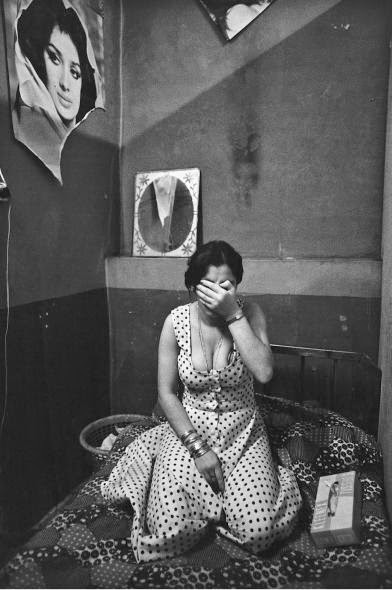Earlier this month I have visited Amsterdam-based FOAM photography museum to check Kaveh Golestan's The Citadel 1975-77 photo documentary project of Tehran's Shahr-e No red light district. Literally translated as a "New City" Shahr-e No was an old 1920 neighborhood that got surrounded by walls in 1953 exclusively inhabited by female and young male prostitutes. The entrance to the ghetto where prostitutes were walking on the streets semi-naked was through one gate and only men were allowed to enter the citadel.
Few weeks before the victory of the 1979 Islamic revolution the activists burned and demolished the "sin city" with undisclosed number of residents trapped inside, the survived inhabitants were later executed as a part of post-revolutionary cultural cleaning. The area has been converted into a recreational zone with a park and a pond. Thus, Golestan's photo archive is one of the few remained documentations that trace back nowadays unspoken and shameful part of Tehran city's history. Women most of whom he befriended during almost two year-lasting project are humanized through the lens of Kaveh's camera that captures natural, non-staged moments of their daily lives. Vintage photographs together with a newspaper compilation, Golestan's diaries and other materials such as Iranian authorities documents as well as audio-taped interviews of the women living in the citadel immersed me in their ambience of misery and despear.
Shahr-e No's citadel 1920 plan
Kaveh Golestan's The Prostitutes series, 1975-1977. Source: artist's website
This week theme of Shahr-e No unexpectedly reappeared during my Hungarian Easter getaway at Budapest's Mûcsarnok with New-York based Shirin Neshat's small, but very powerful video installation exhibition. This first Budapest solo show comprises from a surrealistic two-channel 1993 Rapture video shot in Marocco and a twenty-minute chapter Zarin where the leading role is played by a Hungarian actress Orsi Tóth. This 2005 piece is about Shahr-e No resident Zarin who decided to flee the ghetto and her humiliating present. A part of the artist's bigger reclaimed project based on 1989 Women Without Men novel by Shahrnush Parsipur, this video chapter is aesthetically and eloquently reveals an unpleasant and controversial topic of women in society and their sexual exploitation.
Stills from Shirin Neshat's 2005 Zarin video
Shirin Neshat's 2009 Silver Lion awarded Women Without Men trailer with English subtitles
Shirin Neshat's 2009 Silver Lion awarded Women Without Men full movie in Farsi
Post-screening discussion with Shirin Neshat and Shoja Azari
Note: Kaveh Golestan's exhibition in FOAM lasts until May 4, 2014 and Shirin Neshat's - April 27, 2014.










No comments:
Post a Comment